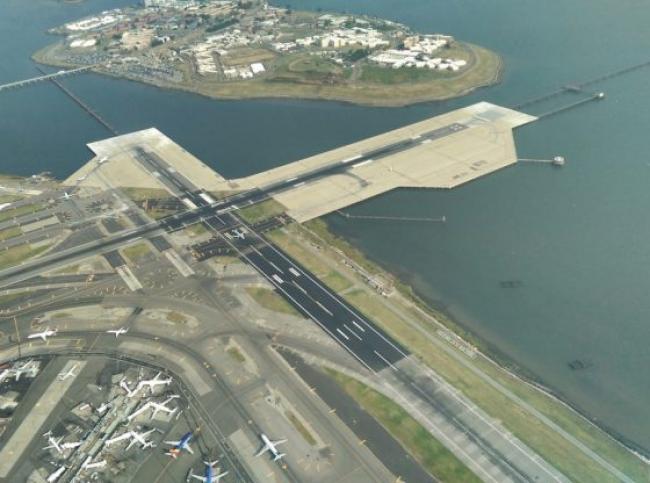Articles Menu

Airports around the globe are being warned to prepare their facilities for climate change-related impacts, including extreme weather and sea level rise.
The warning comes in a policy paper published on Wednesday by a leading global airline trade association. It encourages airports to conduct risk assessments and consider adaptation and mitigation measures to prepare for the potential climate-related impacts to infrastructure and operations.
Published by the Airports Council International, the authors said the paper’s goal is to help airport operators better understand the risks and prepare for what’s ahead as the atmosphere warms further.
“Improving operational resilience and adapting to the predicted effects of climate change has been a priority for airports around the world for quite some time but recent events have brought this into even sharper focus,” said Angela Gittens, general director for Airports Council International.
Weather-related events account for more than 70 percent of all airport delays and costs airlines and passengersairlines and passengers billions of dollars per year, according to the Federal Aviation Administration.
Last month, Hurricane Florence caused a backlog of air travel up and down the east coast. In 2017, flooding from Harvey closed Houston-area airports for several days and airports serving New York City were closed after superstorm Sandy slammed the East Coast in 2012.
Delays from those storms rippled across the globe. Worldwide, airlines lost an estimated $500 million in revenue and disrupted operations during Sandy.
Contributing to airports’ vulnerability is their locations. Fifteen of the 50 busiest airports worldwide sit less than 30 feet above sea level, making sea level rise a direct risk factor, as well as putting them in danger of storm surges.
One study of sea level rise and land subsidence concluded that half of San Francisco’s runways could be underwater by 2100. It is one of the impacts that the city cites in its climate liability suit against five major oil companies, which is awaiting an appeal in federal court. San Francisco is one of more than a dozen communities across the country seeking compensation from the fossil fuel industry for the costs of climate impacts.
Researchers studying the airports also predict that extreme heat, which halted takeoffs last year in Phoenix, will also continue to affect airports.
“Climate change is projected to increase mean temperatures at all airports and to significantly increase the frequency and severity of extreme heat events at some,” Ethan Coffel and Radley Horton wrote in a 2015 study published by the American Meteorological Society.
Extreme heat negatively affects aircraft performance, requires longer distances to take off and forces airlines to limit aircraft weight. Coffel and Horton said heat is likely to increasingly affect the industry, particularly at airports with short runways and little room to expand.
“We can say with confidence that there will be more weight-restricted days, and larger weight restrictions,” Horton told the New York Times.
The ACI’s paper outlines specific actions facilities can take and recommends airports incorporate the potential impact of climate change into their master plans.
Earlier this year, Airports Council International passed a resolution recognizing the increased impact of climate change and called for airports to take steps to both reduce emissions and prepare their facilities for future impacts.
The newly released paper outlines specific steps airports can take to accomplish those recommendations.
Included is a list of climate-related initiatives undertaken by a handful of airports, including LaGuardia, which was forced to replace its electrical substation after Sandy, and Newark, where a new terminal is being built according to specific guidelines for climate resiliency.
Gitten said the paper’s goal is to provide airports with practical information, advice and real-life examples.
“Each airport can then make decisions on how they may introduce, improve, or adapt their own procedures and resilience plans that best suit their infrastructure and local conditions,” said Gitten.
“It is well understood that climate change could have far-reaching effects and airports are certainly not immune to them.”
[Top photo: Airports like New York's LaGuardia are sitting ducks for climate impacts, a new industry study shows. Photo credit: Daniel Piraino via Flickr]